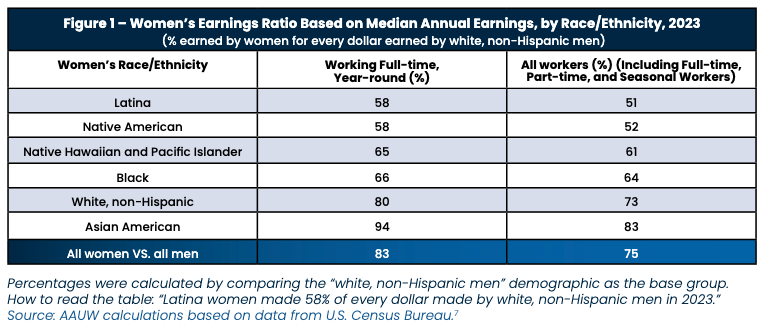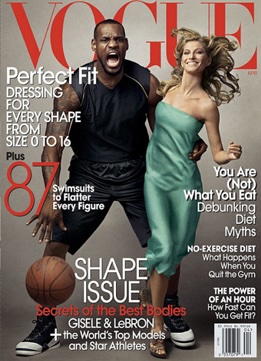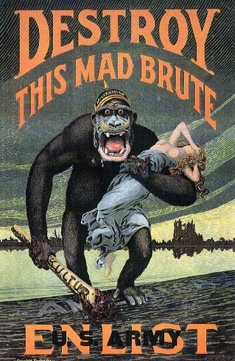6 Intersectionality
Articulated by legal scholar Kimberlé Crenshaw (1989, 1991), the concept of intersectionality identifies a mode of analysis integral to race, gender, and sexuality studies. Within intersectional frameworks, race, class, gender, sexuality, age, ability, and other aspects of identity are considered mutually constitutive; that is, people experience these multiple aspects of identity simultaneously and the meanings of different aspects of identity are shaped by one another. In other words, notions of gender and the way a person’s gender is interpreted by others are always impacted by notions of race and the way that person’s race is interpreted. For example, a person is never received as just a woman; how that person is racialized impacts how the person is received as a woman. So, notions of blackness, brownness, and whiteness always influence gendered experience, and there is no experience of gender that is outside of an experience of race. In addition to race, gendered experience is also shaped by age, sexuality, class, and ability; likewise, the experience of race is impacted by gender, age, class, sexuality, and ability. [1]
Understanding intersectionality requires a particular way of thinking. It is different than how many people imagine identities operate. An intersectional analysis of identity is distinct from single-determinant identity models and additive models of identity. A single determinant model of identity presumes that one aspect of identity, say, gender, dictates one’s access to or disenfranchisement from power. An example of this idea is the concept of “global sisterhood,” or the idea that all women across the globe share some basic common political interests, concerns, and needs (Morgan 1996). If women in different locations did share common interests, it would make sense for them to unite on the basis of gender to fight for social changes on a global scale. Unfortunately, if the analysis of social problems stops at gender, what is missed is an attention to how various cultural contexts shaped by race, religion, and access to resources may actually place some women’s needs at cross-purposes to other women’s needs. Therefore, this approach obscures the fact that women in different social and geographic locations face different problems. Although many white, middle-class women activists of the mid-20th century US fought for freedom to work and legal parity with men, this was not the major problem for women of color or working-class white women who had already been actively participating in the US labor market as domestic workers, factory workers, and enslaved laborers since early US colonial settlement. Campaigns for women’s equal legal rights and access to the labor market at the international level are shaped by the experience and concerns of white American women, while women of the global south, in particular, may have different concerns, including freedom from oppressive structures wrought by histories of US imperialism and European colonialism.
In contrast to the single-determinant identity model, the additive model of identity simply adds together privileged and disadvantaged identities for a slightly more complex picture. For instance, a Black man may experience some advantages based on his gender, but has limited access to power based on his race. This kind of analysis is exemplified in how race and gender wage gaps are portrayed in statistical studies and popular news reports. Consider, for example, the median wage gap table from the American Association of University Women, compiled in 2024. In reading the table, it can be seen that the gender wage gap is such that in 2023, overall, women earned 83% of what men did in the US. The table breaks down the information further to show that earnings varied not only by gender but by race as well. Thus, Latina women earned only 58% of what white men did while white women made 80%. This is certainly more descriptive than a single gender wage gap figure or a single race wage gap figure. The table is useful at pointing to potential structural explanations that may make earnings differ between groups. For instance, looking at the chart, you may immediately wonder why these gaps exist; is it a general difference of education levels, occupations, regions of residence or skill levels between groups, or is it something else, such as discrimination in hiring and promotion? What it is not useful for is predicting people’s incomes by plugging in their gender plus their race, even though it may be our instinct to do so. Individual experiences differ vastly and for a variety of reasons; there are outliers in every group. Most importantly, even if this chart helps in understanding structural reasons why incomes differ, it doesn’t provide all the answers.
 The additive model does not take into account how our shared cultural ideas of gender are racialized and our ideas of race are gendered and that these ideas structure access to resources and power—material, political, interpersonal. Sociologist Patricia Hill Collins (2004) has developed a strong intersectional framework through her discussion of race, gender, and sexuality in her historical analysis of representations of Black sexuality in the US. Hill Collins shows how contemporary white American culture exoticizes Black men and women and she points to a history of enslavement and treatment as chattel as the origin and motivator for the use of these images. In order to justify slavery, African Americans were thought of and treated as less than human, or more “animal-like.” Sexual reproduction was often forced among enslaved people for the financial benefit of plantation owners, but owners reframed this coercion and rape as evidence of the “natural” and uncontrollable sexuality of people from the African continent. Images of Black men and women were not completely the same, as Black men were constructed as hypersexual “bucks” with little interest in continued relationships whereas Black women were framed as hypersexual “Jezebels” that became the “matriarchs” of their families. Again, it is important to note how the context, where enslaved families were often forcefully dismantled, is often left unacknowledged and contemporary racialized constructions are assumed and framed as individual choices or traits. It is shockingly easy to see how these images are still present in contemporary media, culture, and politics, for instance, in discussions of American welfare programs. This analysis reveals how race, gender, and sexuality intersect. We cannot simply pull these identities apart because they are interconnected and mutually enforcing.
The additive model does not take into account how our shared cultural ideas of gender are racialized and our ideas of race are gendered and that these ideas structure access to resources and power—material, political, interpersonal. Sociologist Patricia Hill Collins (2004) has developed a strong intersectional framework through her discussion of race, gender, and sexuality in her historical analysis of representations of Black sexuality in the US. Hill Collins shows how contemporary white American culture exoticizes Black men and women and she points to a history of enslavement and treatment as chattel as the origin and motivator for the use of these images. In order to justify slavery, African Americans were thought of and treated as less than human, or more “animal-like.” Sexual reproduction was often forced among enslaved people for the financial benefit of plantation owners, but owners reframed this coercion and rape as evidence of the “natural” and uncontrollable sexuality of people from the African continent. Images of Black men and women were not completely the same, as Black men were constructed as hypersexual “bucks” with little interest in continued relationships whereas Black women were framed as hypersexual “Jezebels” that became the “matriarchs” of their families. Again, it is important to note how the context, where enslaved families were often forcefully dismantled, is often left unacknowledged and contemporary racialized constructions are assumed and framed as individual choices or traits. It is shockingly easy to see how these images are still present in contemporary media, culture, and politics, for instance, in discussions of American welfare programs. This analysis reveals how race, gender, and sexuality intersect. We cannot simply pull these identities apart because they are interconnected and mutually enforcing.
“Gender” is too often used simply and erroneously to mean “white women,” while “race” too often connotes “Black men.” An intersectional perspective examines how identities are related to each other in our own experiences and how the social structures of race, class, gender, sexuality, age, and ability intersect for everyone. As opposed to single-determinant and additive models of identity, an intersectional approach develops a more sophisticated understanding of the world and how individuals in differently situated social groups experience differential access to both material and symbolic resources.
Intersectionality, or How Race and Gender are Mutually Constitutive
The Vogue magazine cover depicted below generated a lot of controversy when it appeared in 2008 because of the photograph’s striking similarities with an early-20th century U.S. Army recruitment poster, also shown below.
- What similarities do you notice between the two images?
- What stereotypes about race and gender do these images perpetuate?
- How do these images help explain the concept of intersectionality? In other words, how is femininity or masculinity (gender) defined through race in these images? Or, conversely, how is race defined through gender here? In answering this question, think about Collins’s application of the intersectionality framework, discussed above.


- Although the framework of intersectional has contributed important insights to feminist analyses, there are problems. Intersectionality refers to the mutually co-constitutive nature of multiple aspects of identity, yet in practice this term is typically used to signify the specific difference of “women of color,” which effectively produces women of color (and in particular, Black women) as Other and again centers white women (Puar 2012). In addition, the framework of intersectionality was created in the context of the United States; therefore, the use of the framework reproduces the United States as the dominant site of feminist inquiry and women’s studies’ Euro-American bias (Puar 2012). Another failing of intersectionality is its premise of fixed categories of identity, where descriptors like race, gender, class, and sexuality are assumed to be stable. In contrast, the notion of assemblage considers categories, events, actions, and encounters between bodies, rather than simply attributes (Puar 2012). Assemblage refers to a collage or collection of things, or the act of assembling. An assemblage perspective emphasizes how relations, patterns, and connections between concepts give concepts meaning (Puar 2012). Although assemblage has been framed against intersectionality, identity categories’ mutual co-constitution is accounted for in both intersectionality and assemblage. ↵

